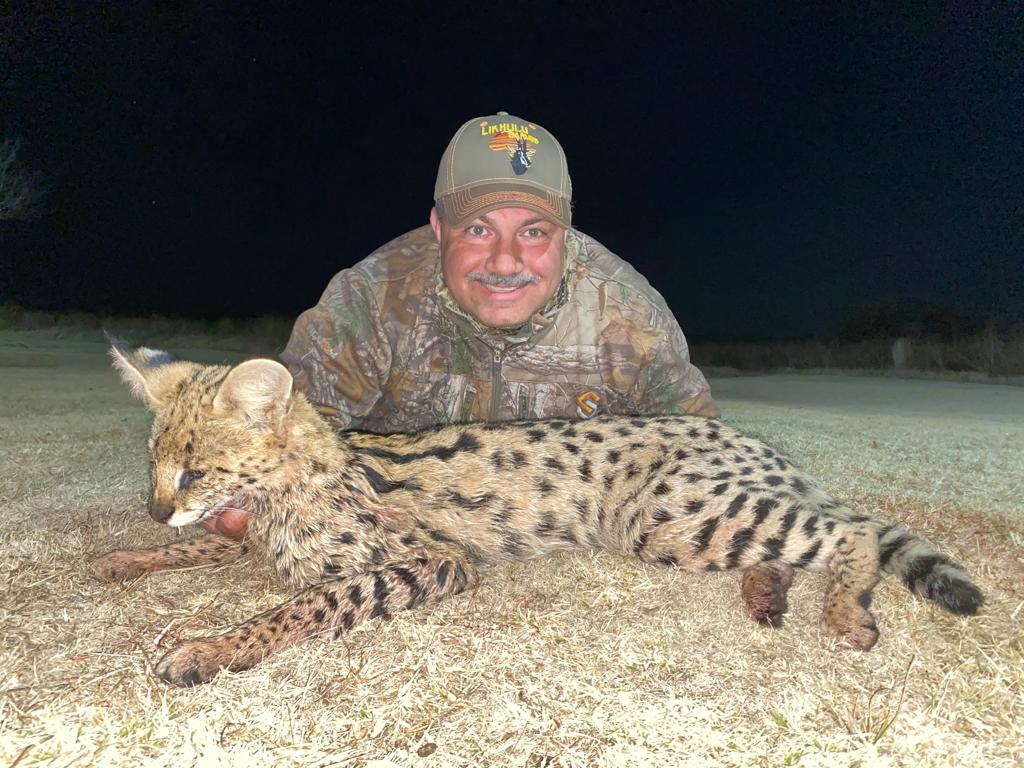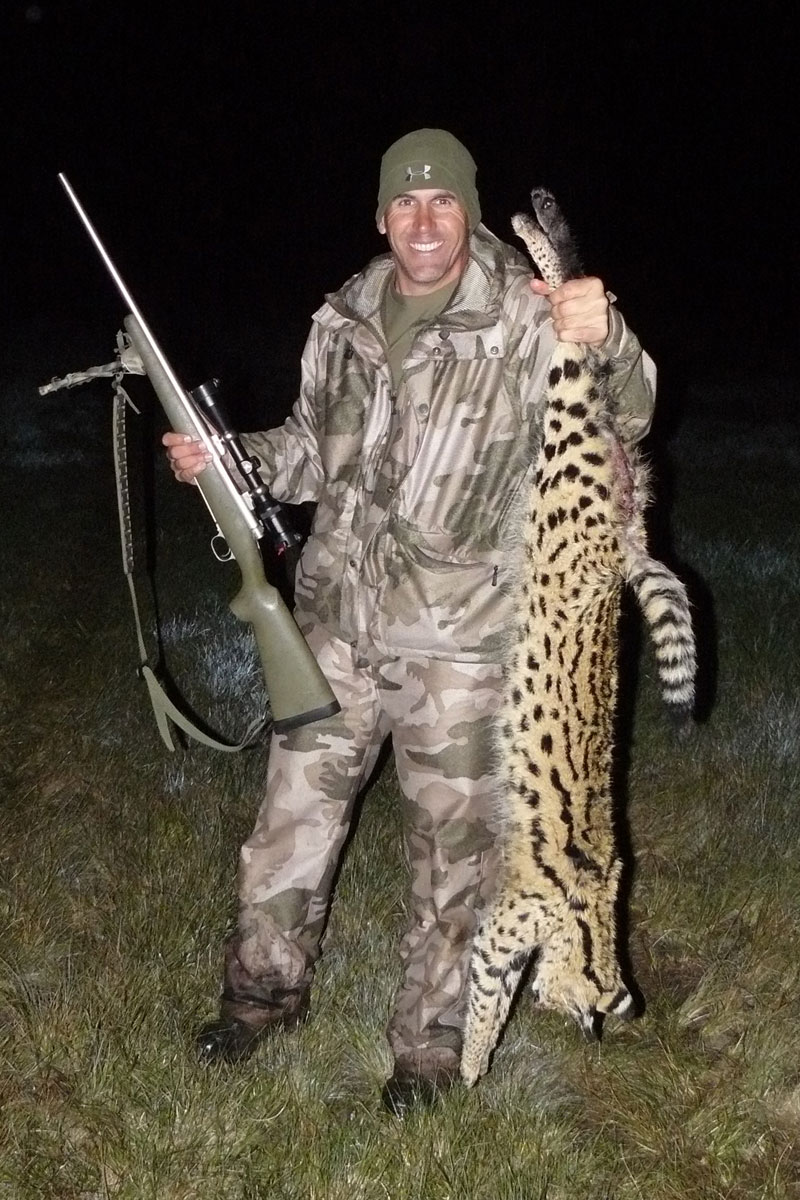Africa’s predators range from the diminutive genet all the way up to the fearsome hyenas. Just collecting the foxes, small cats, and hyenas can fill out a corner of a trophy room. Predators are usually hunted at night, and other nighttime species such as the honey badger, aardwolf and African porcupine can also be hunted concurrently.
Many African hunters take specialty animal hunts in South Africa to collect the nocturnal bushpig. Bushpigs are normally hunted over bait. Either way, the taking of a trophy bushpig is a great accomplishment.
Hunting small predators and nocturnal animals is not only thrilling but also extremely satisfying. In South Africa, these hunts are conducted using spotlights at night, baiting and predator calling, with strict adherence to hunting laws.
Most of these animals require a prior hunting permit, and we will need a MINIMUM of 6 weeks prior to your hunt to apply for permits. Also, in certain parts of the country there are limited number of permits per Outfitter on certain species.
When it comes to hunting nocturnal creatures, there are three primary methods utilized. Some of these animals can be lured into bait sites, so you will sit quietly in a blind at night waiting for them to come to feed. The outfitter maintains bait stations year-round, making these stations a regular feeding spot for numerous animals. Trail cameras are used to determine which bait sites are currently being utilized to make your hunt more predictable.
Our blinds are designed to make night hunting comfortable. The blinds are furnished with mattresses, blankets, and pillows, or very comfortable chairs, all will depend on the terrain where the blind is. There are buzzers that will vibrate if animals approach the baits. We use thermal or \night vision and has rifles equipped with night/thermal scopes. Some of our bait stations we have solar lights so game coming in are used to the light and this eliminate the use of thermal/night visions scopes etc.

Spotlighting is an exhilarating way to observe animals in their natural habitat. You never know what you might encounter at night. Be prepared to act quickly once the PH (Professional Hunter) has determined that it is a trophy you are seeking.
The primary method of hunting will be by spotlighting at night as you slowly drive through the grasslands and pasture looking for the tell-tale glow of a small cats eyes.
A third way to hunt these predators is by predator calling, most of these small predators respond very well to a predator call especially the Serval, Caracal and Jackal. Calling at night gives you the upper hand since predators feel secure and are more likely to respond to the call. To hunt and call predators,
you'll need to be in a vehicle and use a hunting chair. The darkness provides a cover for you and your vehicle, making it easier to approach and call them with less caution. This also allows you to move more quickly from one location to another and maximize your hunting time.
However, calling Black Back Jackal or Caracal during daylight hours can also work, especially if you camouflage yourself and your vehicle well and position your stand further from a waterhole.


If you want to increase your chances of success on a predator hunt, it's best to plan around the new moon from June to October, depending on the areas and species we are going for.
If there's a dead animal carcass in the area, a day shoot could also be effective. Remember that predator hunting and calling requires skill, preparation, and patience.
Just about any small Caliber centrefire rifle is adequate for the taking of this little cat. The .222 or .223 are excellent Caliber’s, especially if loaded with solid bullets. Be careful of the larger Caliber’s with expanding bullets if you want to save the pelt. Shot placement is like that employed on the big cats; place your shot just behind the shoulder a bit below the midpoint of the body.